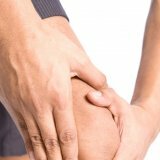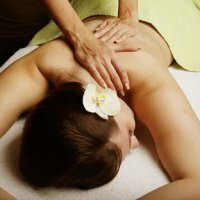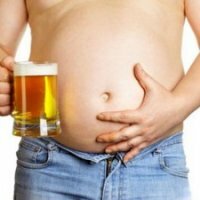Physiotherapy for arthritis and arthrosis

After reaching middle age, rarely does anyone keep their joints healthy. With the years, the mobility of the joints is gradually decreasing. To adapt to these changes, a person passes to the old man's behavior. But to a deep regret these changes occur also at a young age. To help come therapeutic exercise in arthritis and arthrosis.
Physiotherapy for arthritis
Arthritis - inflammation of the joints, which is accompanied by pain during exercise, and then at rest, by restriction of motor functions, and in severe forms, complete immobility may occur. There is monoarthritis( inflammation of one joint) and polyarthritis( inflammation of many joints).
For the treatment of this disease, therapeutic gymnastics is used. Activation of the respiratory and cardiovascular system, the neuromuscular apparatus, which improves metabolism, joint mobility, eliminates pain and strengthens muscles.
The main feature of exercise therapy is that all exercises must be performed in light conditions: lying down, sitting on all fours, in water, etc. The main thing is not to allow pain. During the exacerbation of the disease, exercise therapy is performed at home in a warm room 2-3 times a day.
The classes include cycling, walking, skiing, breathing and general developmental exercises. Gradually alternate exercises to relax the muscles of the patient's limbs and exercises for patients with joints. In the complex of therapeutic gymnastics jump jumps, exercises with dumbbells and dumbbells in the standing position are excluded.
Arthritis exercises:
- The starting position is lying on the back, legs are straightened. Slowly turn your head to the left, and then to the right, with the head of the pillow not tear. During the exercise at the extreme points of movement, there should be a slight tension in the muscles.
- The starting position too. On inhalation, slowly raise your hands up behind your head, and lower them when exhaling.
- Sitting on a chair, bend your arms in the elbows, putting the brush on your forearms. In this position, do rotational movements of the shoulder joints. Do this movement first clockwise, and then against.
- Sitting on a chair, lower your arms along the trunk. On inhalation, relaxed arms raise upwards, and on exhalation we lower downwards.
Physiotherapy for arthrosis
Arthrosis is a disease of the joints associated with improper metabolism, which is accompanied by changes in the cartilaginous tissues of the joints. This disease occurs as a result of infectious diseases, intoxication, joint injuries.
One of the most important methods of treating this disease is exercise therapy. It reduces muscle tension, reduces pain, improves movement of joints, strengthens the supply of articular tissues. The main rule for conducting physical education is not to load a sore spot. If this condition is not met, the patient's condition may worsen. To practice, you need comfortable shoes with a flexible soft sole.
Exercises for arthrosis:
- The starting position is lying on the back. The legs are bent at the knee and hip joints. In turn, unbend and bend the limbs in the knee joint.
- The starting position is the same as in the previous exercise. Pull the heels forward. Such an exercise improves the metabolic processes in the joints of the legs and relieves muscle tension.
- The starting position is lying on its side. Rectified legs are raised and lowered.
- Lying on your back and bending your knees, ride a little from side to side.
- Standing on all fours, do the exercise kitty: bend and arch your back, stretch.
- In the sitting or standing position, raise and lower the shoulders, with the amplitude of the movements not more than 1-2 cm. And in this position you can do the shoulders of the movement forward and backward.
If there are no exacerbations, it is very useful to practice gymnastics in the pool. In the water, perform flailing movements in the affected joint, exercises aimed at stretching and strengthening the muscles.



